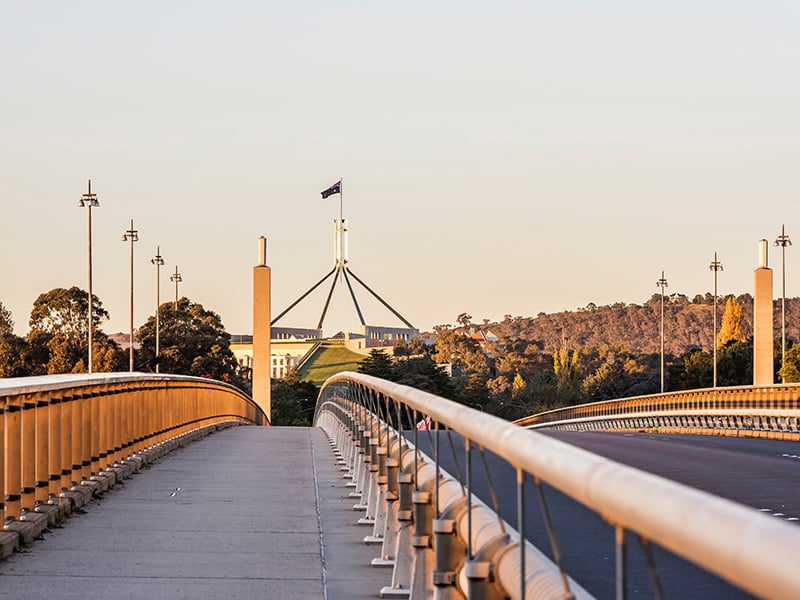The 2022 Budget includes at least 30 specific measures that involve, in one way or another, investment in science, research, and innovation (SRI). These include initiatives to undertake research and development, assist and support knowledge and technology transfer, and more general support for industry and business development.
The Budget measures also include specific initiatives to build human resource abilities and capacities in SRI. These measures are vitally important, as it is clearly difficult to deliver SRI outcomes without the essential knowledge workers who make this possible. Knowledge workers may be technically, professionally, or academically qualified or experienced through practice. All segments of the tertiary education sector have a vital role in building SRI abilities and capacities.
Excluding the National Reconstruction Fund and investment to Grow our Regions, the SRI measures announced in the Budget, and reported in Budget Paper No 2, add to an investment of approximately $3 billion. Some of this is a reallocation from programs of the previous government, and some is new money.

An overall perspective on SRI investment is lacking
The announcement of measures do not come together in any consistent and coherent way. They are contained in the 210 pages of Budget Paper No 2, along with scores of other initiatives, and with little detail of the outcomes and results expected to be achieved from the expenditures. More detailed information about the budget and forward estimates is contained in Budget Paper No 1, Statement No 6 (212 pages).
It has been quite some time since the government produced a budget paper covering investment in science and research. An annual science and technology budget statement used to be presented to the Parliament with the Budget by the minister responsible for Science and Technology over the years 1989-2000.
The annual SRI Budget Tables, now produced by the Department of Industry, Science and Resources (DISR), provide a very important aggregation of expenditure, but they are produced many months after the event. The Tables for 2021-22 were published in December 2021 — seven months after the Budget was delivered.
With the greater part of the investments announced in the 2022-23 Budget occurring in the years beyond 2022-23, the extent to which the measures will lift total SRI investment above the $12 billion investment reported for 2021-22 is uncertain. At least the budget measures do not contain significant cuts to most of the currently operating SRI programs.
The SRI strategy implied in the Budget is considered by many to be a holding operation, but with inflation currently running at 7.3 per cent, many programs will experience cuts in real terms.
New SRI budget measures for 2022-23 and beyond were announced in 11 portfolios: Agriculture; Climate Change, Defence, Education, Employment, Finance, Health, Home Affairs, Industry, Infrastructure, and Social Services. The measures, taken together, do not reflect in any way an overarching vision or mission that guides Australian investment in SRI.
The new budget measures
The Budget measures relating to SRI can be grouped into three broad areas: R&D; innovation and industry development, and capacity building.
The largest R&D investments relate to the Disaster Ready Fund ($630m over four years), Comprehensive Cancer Institutes ($452m over six years), A Better Pan for Forestry and Forest Products ($204.8m over five years) and Carbon Capture Technologies for Net Zero and Negative Emissions ($141m over 10 years). There are smaller amounts relating to disability health ($15.9m over four years), coastal marine ecosystems ($15.3m over two years), affordability housing research ($15.2m over four years) and seaweed farming ($8.1m over three years).
In a broader context, Budget Paper No 1, Statement No 6, reports (p.182) that total expenditure relating to general research is expected to increase by 1.7 per cent in real terms from 2022–23 to 2025–26 — from the current $3.76 billion to an estimated $3.82 billion. This includes expenditure by the DISR, and Education, CSIRO, ANSTO, AIMS, and the ARC. The increase reflects the interim pilot arrangements for Australia’s Economic Accelerator and a 1 July, 2023 start for the National Industry PhD Program and ARC Industry Fellowship Grants.
The most significant budget measures concerning innovation and industry development are the National Reconstruction fund ($15 billion over seven years from 2023-24), Responsible Investment to Grow our Regions ($5.4 billion over seven years), Supporting Australia’s Resources ($160.3m over four years), Support for the Aviation Sector ($139.9m over three years), Supporting Australian Industry ($135m over four years), Solar Banks ($102.2m over four years) and Support for Defence and Manufacturing Industries ($37.3m over three years).
There are also very significant investments in capacity building, including Vocational Education ($921.7m over five years), Strengthening Higher Education ($491.8m over four years), New Energy Apprenticeships ($95.6m over nine years) and Supporting Talent and Leadership in Australian Science and Technology ($47.2m over four years).
Budget cuts to make room for new measures
Budget Statement No 1 also reports that current business investment programs are expected to be cut by 87.1 per cent in real terms from 2022–23 to 2025–26 — from $1.30 billion to $0.16 billion. This flows from cuts to the previous government’s Modern Manufacturing Initiative, the Entrepreneurs’ Program and other industry support programs to make way for the new measures, including Supporting Australian Industry and Supporting Talent and Leadership in Australian Science and Technology.
The R&D Tax Incentive is expected to remain constant in real terms over the 2022-23 to 2025-26 period.
Timing is everything
The 2022-23 Budget measures tend to announce total investments, with implementation occurring over extended periods — quite often up to 10 years. Unsurprisingly, amounts committed for 2022-23 are small relative to envisaged scale-ups in outer years. Thirty per cent of the measures have an implementation timeframe of four years, and a further 30 per cent with implementation of five years or more.
This longer-term timeframe and commitment is to be commended as it allows time for planning, programming, and execution — a virtue often absent in past SRI programs. The amounts involved in the 2022-23 Budget measures are also generally quite substantial — a feature often missing from past initiatives driven by announcements and little else.
But the commitment to longer timeframes carries risks. Implementation over a three-year timeframe will enter the next election cycle, and implementation over six years could cover three election cycles. The life expectancy of some measures may be short as ministers and governments change, harsher fiscal austerity comes into play, and hard policy priority choices have to be made. SRI programs have a track record of early termination in these circumstances.
Long-term commitment through legislation can provide some sort of insurance against ad-hoc cuts. This has been effective with the Rural RDC framework. This did not work, however, for the Education Investment Fund (EIF).
Although the government has announced that $15 billion will be allocated over seven years to establish the National Reconstruction Fund (NRF), the Budget does not include any expenditure commitments. The fund has been established to support, diversify and transform Australian industry and the economy through targeted co-investments in seven priority areas: resources; agriculture, forestry and fisheries sectors; transport; medical science; renewables and low emission technologies; defence capability; and enabling capabilities.
The fund will operate “off-budget”, under a framework that draws on the Clean Energy Finance Corporation model. Like the CEFC, the concessional component of loans will enter the Budget Statements when commitments are made.
Although the NRF is by far the largest industry innovation and industry development commitment, the government is right in giving time to establish the fund as an independent financial investment entity, establish governance arrangements, create strong stakeholder engagement, and develop priorities and indicative strategies.
An opportunity
With many potential initiatives currently in a holding pattern, the 2023-24 budget will provide an opportunity to relaunch Australia’s commitment to SRI with a ministerial SRI budget and plan that sets out policies, strategies and commitments across government investment in public science and research, and support for innovation and industry development in manufacturing, energy, resources, infrastructure, health, national security and public safety.
The Minister for Industry and Science should, in close collaboration with other ministers, coordinate the development and growth of the SRI system and monitor its performance in achieving specific objectives and outcomes for Australian industry and the economy together with outcomes in the social, environmental, and governance (SCG) areas.
The Science Research and Innovation, Budget and Plan should be presented to the Parliament the Minister for Industry and Science at the same time as the Budget speech.
It is also time to engage the business community as strong supporters and advocates for increased and sustained investment in public science. As many have pointed out recently, investments in public science, including major research facilities, lay the foundation for innovations further down the track. Investments in medical science, physics and astronomy that started at the beginning of the last century, and particularly after the end of the Second World War, are now bearing fruit.
Dr John Howard is a Visiting Professor at the UTS Business School and Managing Director of Howard Partners, a public policy research and advisory firm that has been in business for 24 years. See www.howardpartners.com.au. John can be contacted at john@howapartners.com.au
Do you know more? Contact James Riley via Email.

